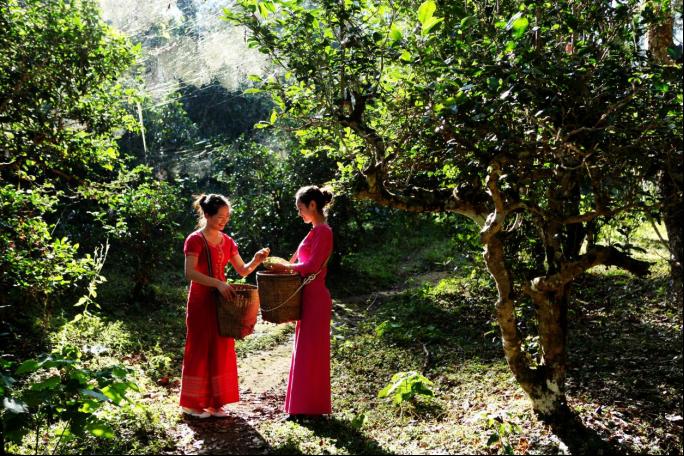Pu'er Jingmai Ancient Tea Garden is located in Jingmai, Mangjing, and Mangyun villages in Huimin Town, Lancang County, Pu'er City. It covers an area of 72 square kilometers and currently has 16000 acres of ancient tea forests, with over 1 million ancient tea trees and 69000 acres of mixed forests.

There are 9 traditional villages here, mainly inhabited by long-standing ethnic groups such as Dai and Bulang. They still preserve ethnic cultural traditions such as language, customs, festivals, and sacrifices to this day. In May 2013, Jingmai Ancient Tea Garden was announced by the State Council as the seventh batch of national key cultural relics protection units.
According to the stone tablet of Mangjing Buddhist Temple, the tea planting in Jingmai Ancient Tea Garden began in the 57th year of the Dai calendar (695 AD), with a history of more than 1300 years. The entire tea garden is distributed in mountainous areas at an altitude of 1400-1600 meters, covering an area of 28000 acres, with an actual picking area of 10950 acres.
The ancient tea garden grows alternately with tall evergreen broad-leaved forests. The tea trees are single trees with a spacing of 200-400 centimeters, a row spacing of 300-600 centimeters, a height of 200-400 centimeters, and a diameter of mostly 10-30 centimeters, with a few trees with a diameter of 30-50 centimeters. The tree state is aging, and there are "crab feet" and various parasitic plants growing on the tea trees.
According to Dai historical records, since the Yuan Dynasty, the tea from Jingmai Ancient Tea Plantation has been a tribute presented by the Menglian chieftain to the emperor, and the tea has been sold to Southeast Asian countries such as Myanmar and Thailand.
Jingmai Ancient Tea Garden is currently the most numerous, largest in area, longest in history, and relatively well preserved cultivated ancient tea tree in the world. It is one of the important production areas of Pu'er tea and is praised by tea scholars around the world as the "Tea Tree Natural Museum" for the earliest development and utilization of tea leaves. It has important historical and scientific value.
